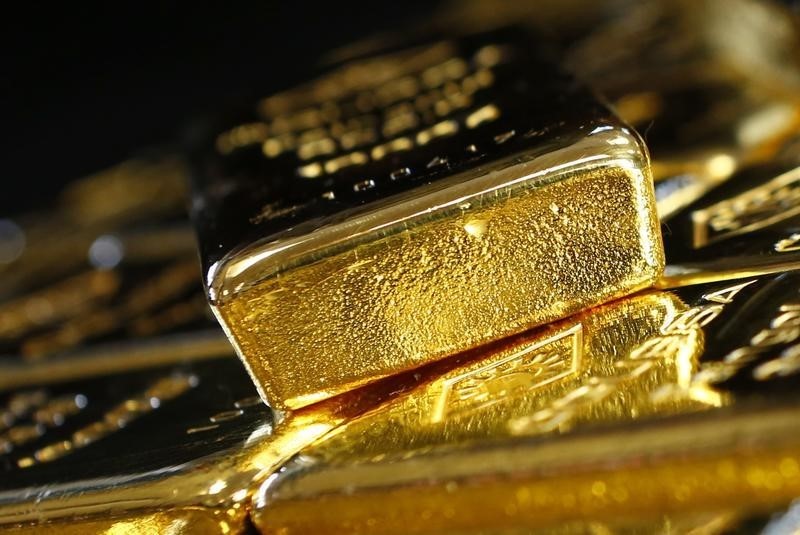By Ambar Warrick
Investing.com -- Gold prices hovered at a nine-month high on Friday after a sharp rally in the prior session, and were headed for a fifth consecutive week of gains amid resurgent safe haven demand and growing uncertainty over the path of U.S. monetary policy.
Prices of the yellow metal surged nearly 1.5% in the prior session, rallying in tandem with a sharp drop in stock markets as weak corporate earnings and softer-than-expected economic data pushed up concerns over a looming economic slowdown.
Hawkish comments from the Federal Reserve also weighed on sentiment. Fed Vice Chair Lael Brainard said on Thursday that interest rates will need to remain high despite signs of easing inflation, given that price pressures are still trending close to 40-year highs. Her comments mirrored similar commitments from other Fed officials this week.
But markets remained uncertain over where U.S. interest rates would peak, given that Fed officials offered differing takes on the level, ranging from just below 5% to close to 6%.
Spot gold fell 0.1% to $1,930.90 an ounce, while gold futures steadied around $1,932.35 an ounce by 19:40 ET (00:40 GMT). Both instruments were trading close to their highest level since April 2022, and were set to add about 0.6% this week.
Gold prices have been on a tear since data showed a sustained downturn in U.S. inflation, which is likely to invite less hawkish moves by the Fed this year. The prospect of smaller rate hikes brings much relief to bullion prices, which were rattled by a hawkish Fed in 2022.
The prospect of a global recession also boosted safe haven demand for gold in recent weeks, amid multiple warnings that major economies could see a contraction this year.
Among industrial metals, copper prices retreated in early Asian trade, but were also headed for a fifth straight week of gains amid continued optimism over an economic recovery in China.
High-grade copper futures fell 0.2% to $4.2408 a pound, but were up 0.6% this week.
The red metal has rallied sharply in recent weeks on growing bets of an economic recovery in China, after the world’s largest copper importer began scaling back most anti-COVID measures in December.
Still, recent gains in the red metal were held back by growing fears of a recession this year.
